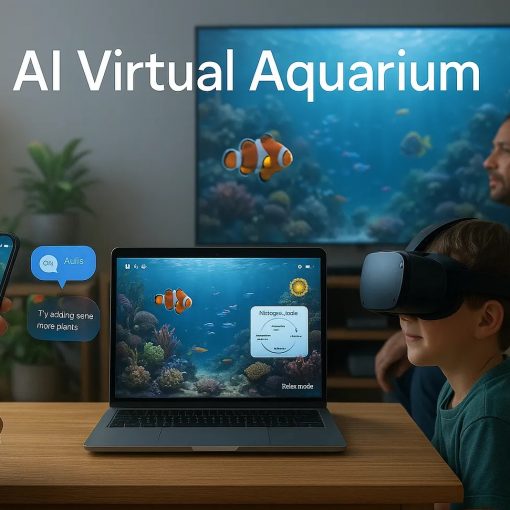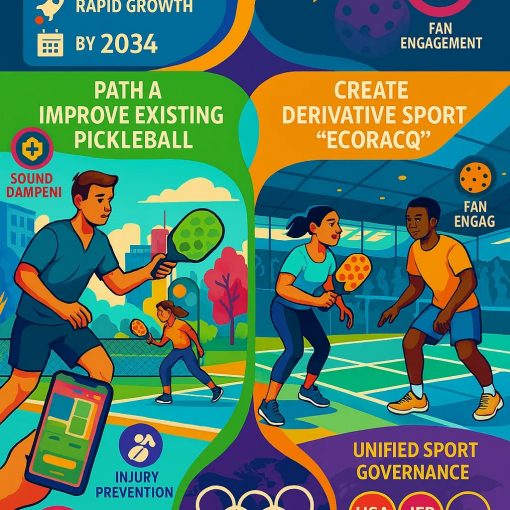Preamble:
Where are we with the development of universal language translator devices considering: standalone devices, implementation in smart devices, the IOT considerations and Apps on cell phones.
In Science Fiction, How Universal Translators work:
These fictional devices spark our imagination, but in reality, we’re still working toward achieving such seamless language translation. These are some of the purported capabilities:
- Pattern \ language Analysis: Universal translators operate by meticulously analysing patterns within an unknown foreign language. They achieve this by processing speech samples from two or more conversing speakers. They also have large databases of intergalactic languages, historical\ Cultural information and the translation is supported with futuristic AI.
- No Physical Alteration: Interestingly, the universal translator does not directly impact the user’s vocal cords (or their alien equivalent). Regardless of the listener’s language, the user continues to speak in their own native tongue. However, the listener perceives only the translated words, not the original alien language that the speaker physically articulates. It’s as if the unfamiliar speech is not merely translated but also subtly replaced.
- Voices and Intermediaries: While the voices remain audible, the universal translator acts as an intermediary, bridging linguistic gaps.
Some Form Factors of Universal Translators:
In the realm of science fiction, universal translators come in various intriguing form factors. In the expanse of the cosmos, where countless civilizations intersect, universal translators play a pivotal role in fostering communication and understanding. Some form factors are:
Ear Implants:
- Imagine having a tiny, unobtrusive implant nestled within your ear canal. These advanced devices provide seamless and discreet translation capabilities. No need for visible gadgets—just a whisper in your ear, and you understand any language spoken around you. Whether negotiating interstellar treaties or ordering alien coffee, ear implants have you covered.
Communicator Pins:
- Picture a sleek, badge-like pin worn by spacefaring personnel. These communicator pins serve a dual purpose: identification and translation. With a simple tap, they activate built-in translation features. The pin’s surface glows softly as it deciphers alien dialects, allowing smooth communication across language barriers. Diplomats, explorers, and starship crew members rely on these trusty pins to bridge the linguistic divide.
Communication Devices:
- In bustling spaceports or aboard starships, you’ll find an array of handheld communication devices equipped with universal translation capabilities. These devices resemble sleek tablets or compact communicators. They analyse spoken words, written text, or even telepathic signals, swiftly converting them into the user’s preferred language. From deciphering ancient alien scripts to negotiating with extraterrestrial merchants, these gadgets ensure effective cross-cultural interactions.
The current state of spoken human languages on planet earth
Total Number of Languages Worldwide: There are approximately 7,000 spoken languages across the globe. However, this number can vary depending on how we define a distinct language versus a dialect. Languages are dynamic and constantly evolving.
- Distribution by Continent:
- Africa: The African continent boasts a rich linguistic diversity, with around 2,158 living languages These languages belong to various language families, including Niger-Congo, Nilo-Saharan, Afroasiatic, and Khoisan. Notable African languages include Swahili, Amharic, Yoruba, Zulu, and Shona.
- Asia: Asia leads the statistics with 2,301 languages. Major languages in Asia include Standard Chinese (Mandarin), Hindi, Bengali, and Arabic.
- Pacific Region: The Pacific region hosts over 1,300 languages. It’s a linguistically diverse area with languages like Fijian, Samoan, and Tok Pisin.
- Americas: North and South America together have approximately 1,000 languages. Indigenous languages like Quechua, Navajo, and Guarani contribute to this linguistic richness.
- Europe: Despite its many nation-states, Europe has just under 300 languages. European languages include English, Spanish, French, German, and Russian.
2. Official Languages:
- The United Nations recognizes six official languages: Arabic, Chinese, English, French, Russian, and Spanish.
-
As of 2023, an estimated 1.46 billion people speak English around the World, this amounts to 18.07% of the global population wordsrated.com.
- Number of native speakers: List of languages by number of native speakers , Standard Chinese (Mandarin) has the most native speakers worldwide, followed by Spanish and English.
3. Language Families:
Languages are grouped into language families based on shared ancestral languages. Of the 7,151 current languages, they can be placed into 142 language families. Some major language families include:
- Indo-European: Accounts for the first language of over 3 billion people. It includes Romance languages (Spanish, French, Italian), Germanic languages (English, German), and more.
- Niger-Congo, Nilo-Saharan, Afroasiatic, and Khoisan: These are major African language families.
- Austronesian: Spoken in Madagascar2.
The current State of universal language translators
Standalone Electronic Language Translators: Electronic language translators have come a long way, offering convenience and bridging communication gaps for travellers worldwide. Whether you opt for a standalone device or a smartphone app, these tools enhance your travel experience by breaking down language barriers. They come in various shapes and sizes, offering features like real-time translation, voice recognition, and multilingual capabilities. Here are some noteworthy options:
- CM CheetahTalk: A sleek and lightweight translator that supports over 40 languages. It boasts a long-lasting battery with up to 24 hours of continuous use. The minimalist design makes it ideal for travellers who want a reliable companion without worrying about low battery levels.
- Pulomi Easy Trans Smart Language Translator Device: A budget-friendly choice that provides basic translation functionality. While it may not have all the bells and whistles, it gets the job done for essential communication.
- Vormor T11 Translator: Known for its image translation capabilities, this device can even translate street signs. Perfect for travellers who need visual assistance in addition to spoken language translation.
2. Language Translation Apps on Cell Phones: Many smartphone apps offer language translation features. These apps leverage the phone’s processing power and internet connectivity to provide real-time translations. Some popular translation apps include:
- Google Translate: Available on both iOS and Android, Google Translate supports a wide range of languages. Users can type, speak, or even take photos of text for translation. It’s a versatile tool for travelers.
- Pocketalk Translator: Designed for ease of use, this app offers instant translations and works offline. It’s particularly useful for travellers who want a reliable language companion without relying on data connectivity.
- ili – Instant Offline Language Translator Device: While primarily a standalone device, ili also has an app version. It specializes in offline translations, making it handy for situations where internet access is limited.
3. Universal Language Translation in Smart Devices:
Internet-of-Things-Assisted Smart English Language Translation and Grammar Learning (ISLTGL): Researchers have developed an ISLTGL platform that combines language translation and grammar learning using the Internet of Things (IoT) .
How it works:
- Linguistic modelling and reliability tests are performed using IoT.
- Interactive features aid in designing an information-assisted translation system.
- The translation approach focuses on making English literature more comprehensible by students.
- The system analyses translation outputs statistically to assess accuracy and completeness.
ISLTGL combines IoT with existing English language translators to enhance grammar learning. Results: ISLTGL significantly improves student participation, fluency, efficiency, satisfaction, and word/sentence prediction compared to traditional teaching methods .
- Smart Glove for Sign Language Translation: A practical project aims to replace sign language with electronic devices that translate sign language into voice. Mute and deaf individuals can use gloves to communicate with regular people via smartphones .
- Language Translation Apps in Health Care Settings: Mobile devices enable language translation, improving communication between patients and staff in health care settings .
- Integrated Language Translation IoT Devices: Research explores wearable devices like the Smart Hat, which integrates IoT and AI technologies to facilitate knowledge exploration for children .
4. Language translation services
The market is not just defined by Software and Devices. These are the traditional services that combine advanced technology with professional linguists’ expertise to facilitate communication across linguistic barriers. These services cater to various needs, from legal documentation to digital marketing, offering comprehensive solutions for effective cross-cultural communication. Here’s a summary of the key services offered:
- Reatime translation: Although this post focuses on spoken language software and devices, these services provide: In person or technology\ virtual support for: Business meetings, Conventions, Governments, Public presentateions etc. They are service facilitatiors and users of software\ devices and should be considered in the market and competitor mix.
- Certified Translation & Legalization: Ensures translations are legally certified and appropriate for legal purposes, providing peace of mind for official documents.
- Document Translation: Whether it’s personal or professional documents, translators and quality control systems ensure accuracy and reliability.
- Multilingual SEO & Digital Marketing: Creates optimized content for both organic and PPC results, ensuring messages resonate with search engines and target audiences in multiple languages.
- Desktop Publishing: Provides design and editorial services to maintain consistent messaging across languages and formats, enhancing the visual appeal and readability of translated content.
- Transcreation: Adapts existing content to create an emotional connection with the audience, regardless of their location or cultural background, ensuring the message remains impactful and engaging.
- App & Website Localization: Ensures linguistic, cultural, and tonal correctness before content goes online, enhancing user experience and accessibility for global audiences.
- Film and media: Providing: translation, subtitles, and voice-overs for various Films\ Animation and media (Advertising, Education, Marketing, Meta, Games, Busineses on YouTube etc)
Market Size:
The Language Services Market has witnessed substantial growth in recent years, driven by several key factors. the Language Services Market is thriving, fuelled by globalization, digitalization, and the need for cross-cultural communication. As businesses continue to expand globally, language services play a pivotal role in bridging linguistic gaps. the market size and trends:
- There are 195 large language service providers globally (with large number of small and medium sized), as well as by region: See: Companies
- In 2024, the Language Services Market was estimated to be USD 76.78 billion.
- By 2029, it is projected to reach USD 104.31 billion.
- The CAGR (Compound Annual Growth Rate) during this period is approximately 32%.
Drivers of Demand:
- Globalization: As businesses expand internationally, the need for effective communication across languages grows.
- Digitization of Content: The rise of digital platforms necessitates translation and localization services.
- Personalized International Customer Service: Companies strive to connect with diverse audiences, leading to increased language service demand.
Notable Developments:
- Iflytek, a Chinese speech recognition company, secured significant funding to enhance its translation services and AI translation engine.
- Language services are no longer limited to large corporations; small businesses, local governments, and organizations also rely on them.
Global Impact:
- International trade expansion and free trade agreements contribute to the surge in language service demand.
- Businesses of all sizes recognize the importance of effective communication in foreign markets.
Conclusion
The development of universal translator devices has made significant strides, offering innovative solutions to bridge language barriers and facilitate global communication. From standalone devices to integration with smart devices and IoT ecosystems, these advancements have opened new possibilities for cross-cultural interactions and collaboration.
Drawing inspiration from both science fiction and real-world technological advancements, universal translator devices leverage pattern analysis, AI-driven algorithms, and seamless user interfaces to deliver accurate and efficient language translation capabilities. Whether implanted in earpieces, integrated into communication pins, or embedded within smartphones, these devices cater to diverse user needs and preferences, enhancing accessibility and fostering inclusivity in a rapidly globalizing world.
However, challenges persist, particularly in addressing the vast linguistic diversity across the globe and ensuring the accuracy and reliability of translation processes. As the number of spoken languages continues to evolve and expand, ongoing research and development efforts are essential to enhance language support, improve translation accuracy, and refine user experiences. Part 2 (Part 2 Implementation )looks at implementation and considerations for creating an updated device.




One thought on “Hi I want to talk, Part 1: The current state of the universal translator devices!!”